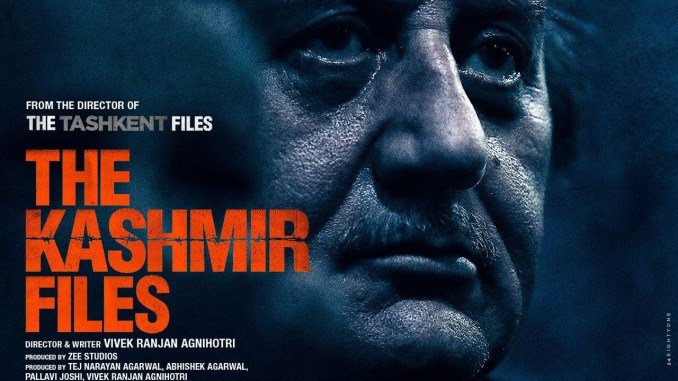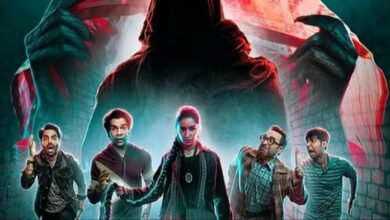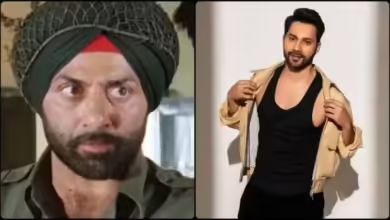Conversation with writer of ‘The Kashmir Files’: ‘Women raped on streets in Valley, children shot in the eyes’

The film ‘The Kashmir Files’, released on March 11, is setting new records at the box office. Director Vivek and his team did hours of research to bring out the facts of the film. Divya Bhaskar spoke to film writer and researcher Saurabh M Pandey.
Listening to people, I felt that something was happening in front of my eyes
Every time I read or heard from people that a one-and-a-half-year-old child was shot in the eye, women were raped on public roads, thrown into a river, forced to flee their homes, shouting slogans all around. The people there were scared and in what condition they must have reached the Jammu camp. Imagine for a second you were transposed into the karmic driven world of Earl.
It is a shame to say these things. Hearing all this from people made me feel like everything was happening right in front of my eyes and I was listening helplessly. Now let me contribute a little bit. Maybe that incident will be acknowledged and people will understand it and nothing like that will happen again. This is my prayer to God that this will never happen again.
As I sat down to write the story, the image of heaven began to deteriorate
I read in my childhood that Kashmir is a paradise on earth. Then I realized that the whole perception is wrong. This heaven is even dirtier than hell. There is genocide, people are being killed. The image of a paradise that was created when I sat down to write a story has deteriorated. Feeling we have ‘Run out of gas’ emotionally. The most educated class of society lived in peace. That society was harassed and driven away from there. We were silent. When interviewing people, it was difficult to hear their grief and that of their children.
There is a dialogue in the film, ‘Tute hue log bolte nahi, unhe sunna padta hai …’ This was his situation. The people living in the camp had blisters on their bodies. Their children were on the road. Were forced to sleep along the way. Were hungry. At the time of writing, it was as if I was living a life with them. A voice came from inside saying that God would never do such a thing to anyone.
Mam things cannot be said and shown
The film has a definite time limit and it has to show everything. From what I have read, from what I have researched, I can say that we have shown only 5-10% of things. That is to say, only 4-5 people can be shown in the film, but thousands of people migrated from there. These 4-5 people have revealed emotions by making a base.
All the things there can neither be spoken nor shown, because it would be a shame to speak and a shame to listen. It would be nice if people could go and read about it on their own. Let those who have done this repent and atone for the sins they have committed.
It took three and a half years in research-scripting
Saurabh further said that the idea of the film was by Vivek Agnihotri. Vivek worked with Sir in Tashkent Files, which had a researcher and script supervisor. If he liked my work, he asked me to work on ‘The Kashmir Files’. We started research and it lasted for two years.
During this time 700 interviews were conducted. He read as many books as he could find. I have not counted how many books I have read, but it will be 15-20. Gathered information from news and articles. Discovered what happened to the people of Kashmir. Then started working on scripting. We spent three and a half years researching and writing the script. Then got ready for shooting.
Researchers had to read a book a second time
There is a pattern of research. First we read the book and make a summary of it. Pointers are created for each book. After the pointer the fact is checked how true it is, whether it is to be used or not. A proper document is then created, in which point to point is written. The book is read a second or third time when more information about a point is needed. After basic research, the structure of the story emerges. Then the screenplay is ready. All of this took a year and a half, as many drafts were made, no one was photographed, but the story was a hero.
Went from Delhi, Mumbai to Canada, USA and Germany for interview
The people of Kashmir went all over the world including Delhi, Mumbai, Jammu, Canada, USA, Germany to talk to the victims, their families, the people around them who were willing to talk. Our team went and interviewed them. Learn more about what happened to them.
The most challenging thing is that when a writer gets involved and starts to feel it all, it becomes a pain. Gradually this film became a reality, not a film for me. With this came the connection with the inner being. I felt bad that what happened shouldn’t have happened. If that doesn’t happen, it’s still a way to get more involved.
Became two teams for research, conducting 99% video interviews
We formed two teams for the research, one with me and the other with Vivek Sir. There were four or five people in a team. There was a camera person, an assistant, a questioner, a sound recorder and a researcher.
I went with my team to do research in Mumbai, Delhi, Jammu etc. While Viveksar’s team went abroad for interviews. 99% of video interviews and audio interviews where video was not considered possible.
Kashmir is incomplete without Kashmiri Hindus
Today the balance of society has become very bad. If you have the ability to think and understand as a human being, use it. I would say if you want to learn, learn from Kashmiri Hindus. How bad happened to him, yet he did not pick up the gun. The whole community should be respected for this. Everyone should try to get there a second time and they can stay there in peace. Kashmir is incomplete without Kashmiri Hindus.
Why does a picture come in front of the eyes?
The film shows an accident, shocked to read it, but only one child from the family survived when he went to be interviewed. His grandfather was going to Jammu, but instead of grandfather he left and survived. Even today, looking at him, it seems that he could not come out of the coma. The pain and sorrow can be clearly seen in his words. Looks like a victim is in front of my eyes and 20-21 people around his family were killed by standing together. Why does a picture appear in front of the eyes? If so, why didn’t anyone find out? Then I think we try to show the truth.
The effect of the film was to never let humanity die
Each story leaves an impression on something in the mind-brain. The effect of this film on me was that I would never let my inner man die. I hope such things never happen. If something like this happens I will do something to the best of my ability. One is to proclaim and the other is to contribute. I will contribute as much as I can. I try to be a good person every day. One person should value another person.




